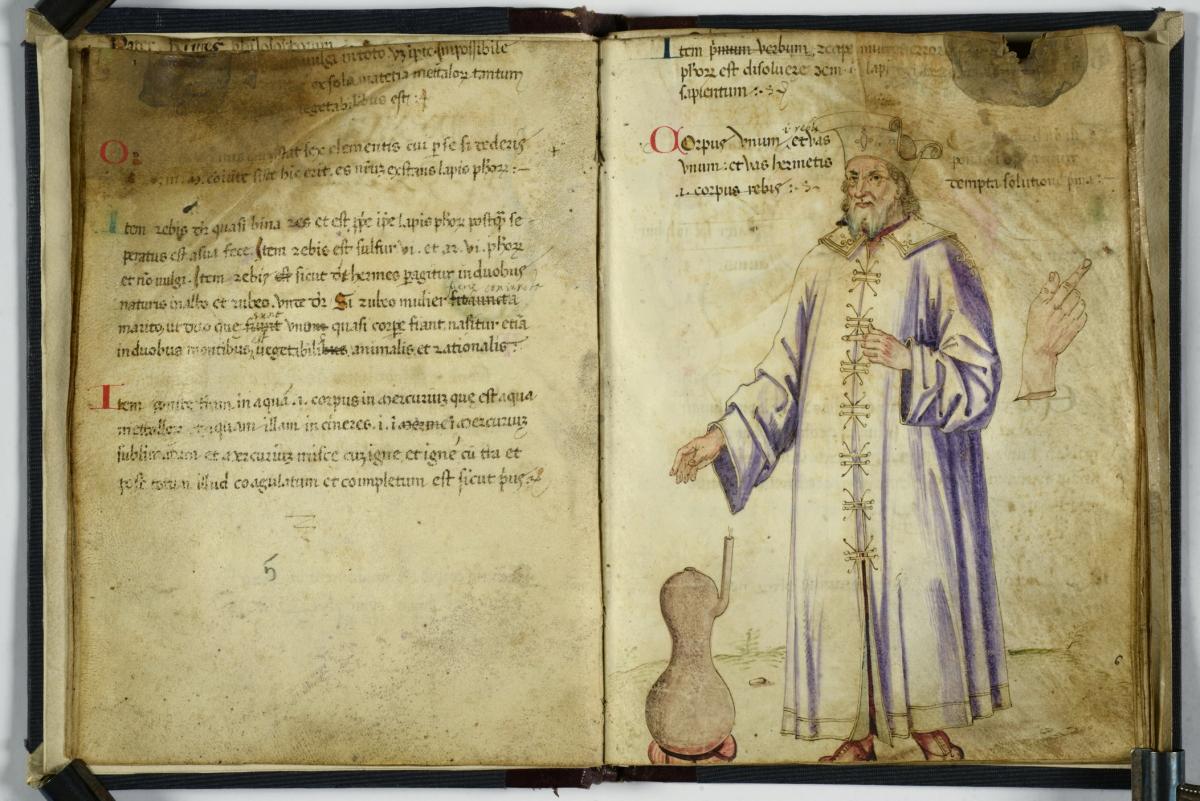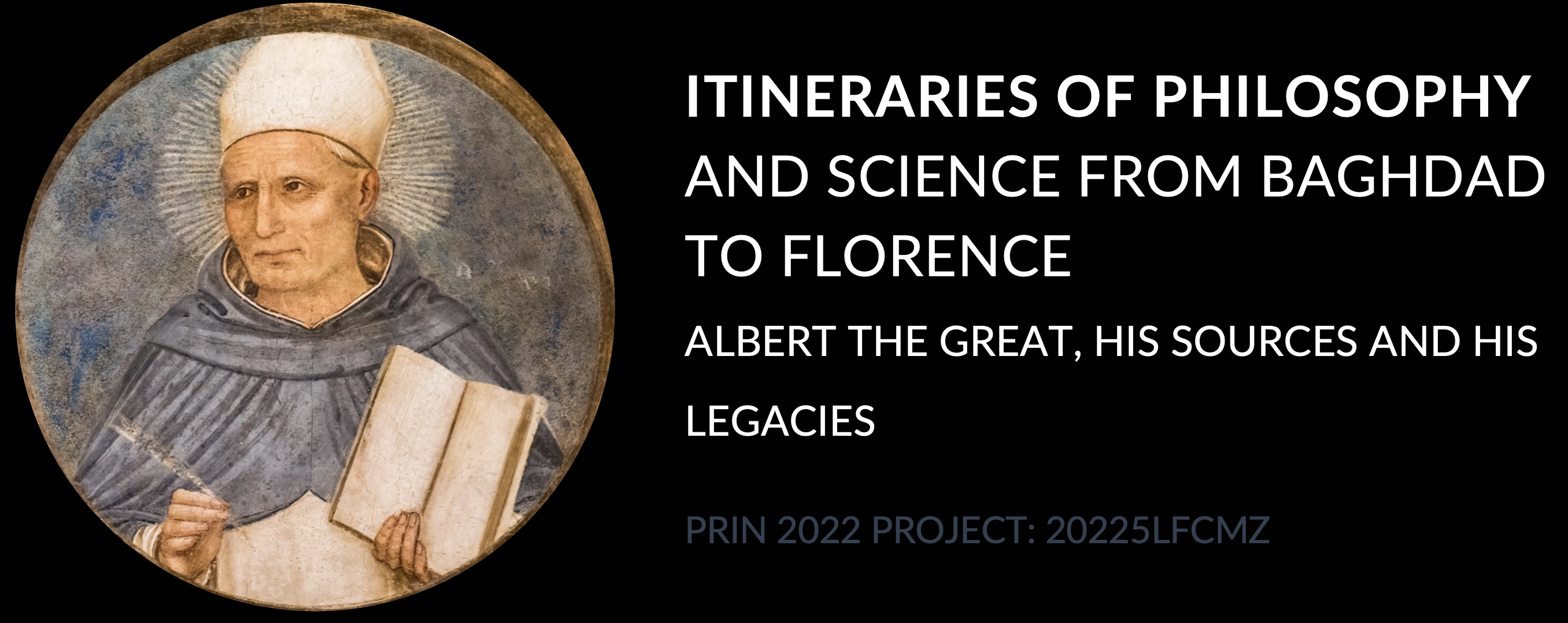
(Ashb. 1166, ff. 5v-6r)
Questa sezione, che include una vasta banca dati, consente l'accesso alle informazioni e ai contenuti bibliografici, nonché alla consultazione delle riproduzioni digitali dei manoscritti ermetici di epoca medievale.
La realizzazione del catalogo bibliografico si basa sul censimento dei libri estratti dal volume I testi e i codici di Ermete nel Medioevo edito da Paolo Lucentini e Vittoria Perrone Compagni e dall'appendice Le stampe ermetiche curata da Paolo Lucentini e Antonella Sannino, Firenze 2001, per quanto riguarda i testi numerati 1-23, 43-45, e i campi "descrizione", "manoscritti" e "libro antico".
La raccolta sistematica dei dati delle stampe antiche comprende le loro localizzazioni, rintracciate attraverso l'aiuto di ampie banche dati.
This section, which includes a vast database, provides access to bibliographical and content information and to consultation of digital reproductions of medieval Hermetic manuscripts.
The realization of the bibliographic records draws on the book census carried out in the volume I testi e i codici di Ermete nel Medioevo, edited by Paolo Lucentini and Vittoria Perrone Compagni, and in the appendix Le stampe ermetiche edited by Paolo Lucentini and Antonella Sannino, Firenze 2001, insofar as concerns the texts numbered 1-23, 43-45, and the fields "description", "manuscripts" and "ancient book".
The systematic data collection of ancient prints includes their localization, retrieved through the aid of broad databases.



















